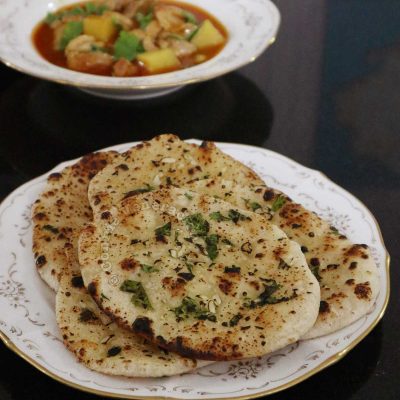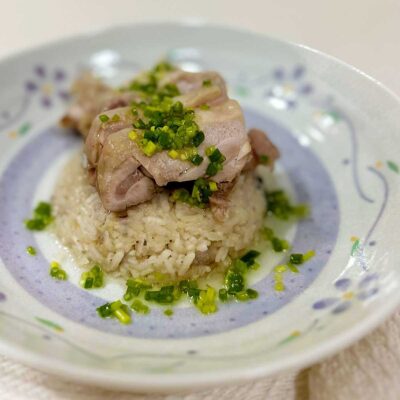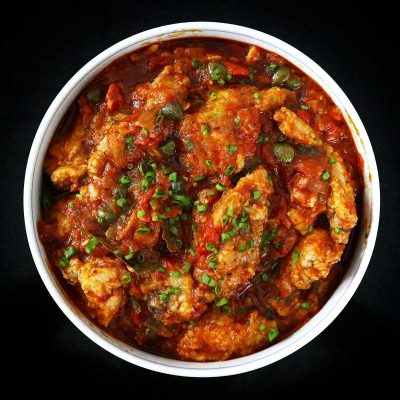We’ve made empanadas countless times before — often baked but occasionally fried. We were aware that fried is better than baked but never has the crust of our fried empanada been this light and flaky. The secret? Lard to make the dough for the crust.
We had been planning on reshooting old empanada recipes for months. The perfect opportunity came when a neighor (engaged in smoked meat business) gave us two kilos of pork fat trimmed from ribs. They weren’t going to use it but they knew we’re a family of obsessive cooks.
I had never made lard in my life until a few days ago. In theory, I knew how. But, in practice, I was a newbie. I was a bit apprehensive (kitchen accidents involving boiling fat kept popping into my head) but, as it turned out, the apprehension was uncalled for. It’s easy to make lard at home. I’ve written the entire process, with photos and tips, and you’ll find the link to that article in the ingredients list below.
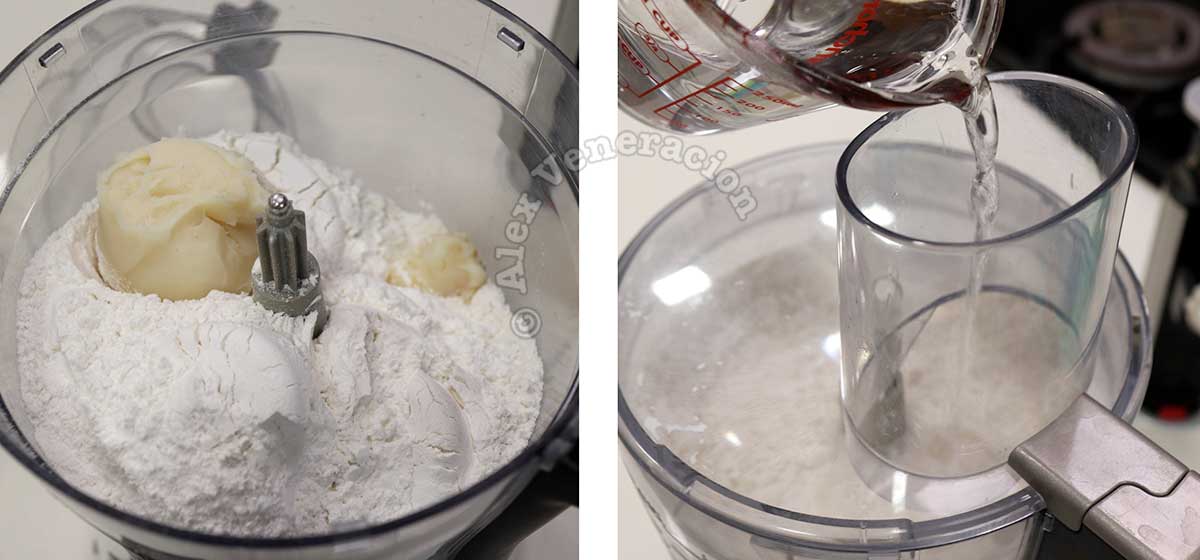
To make the dough, start by dissolving salt in warm water. Dump flour into the food processor, add the lard and pulse to break up the lard to make a mealy mixture. Pour the salted warm water through the funnel while the motor is running and process until the water has been fully incorporated.
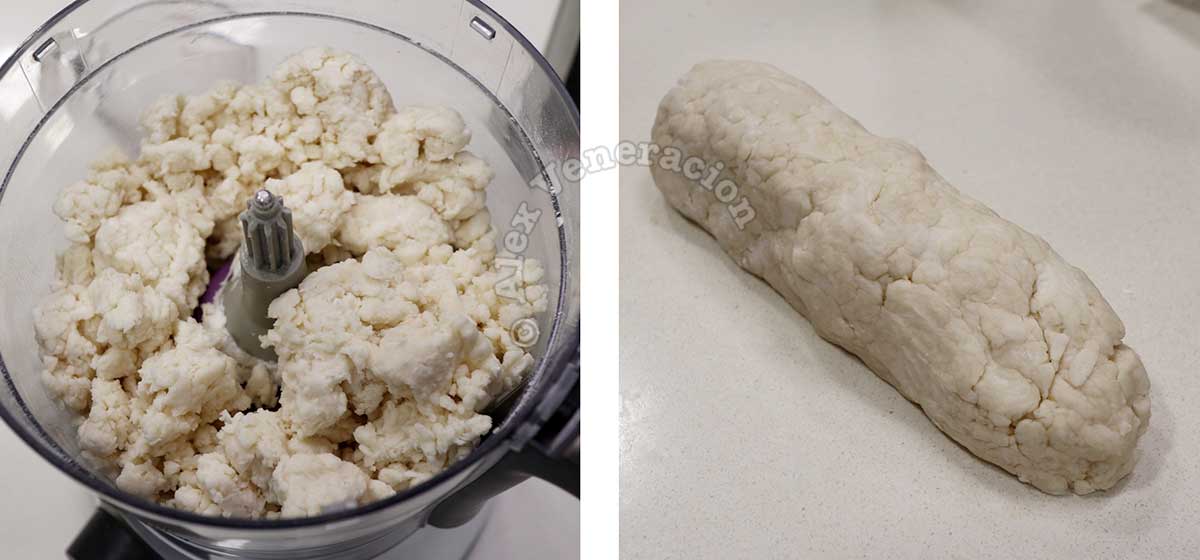
The dough will not be smooth, and that’s just fine. The important thing is that the mass comes together and there are no visible streaks of flour.
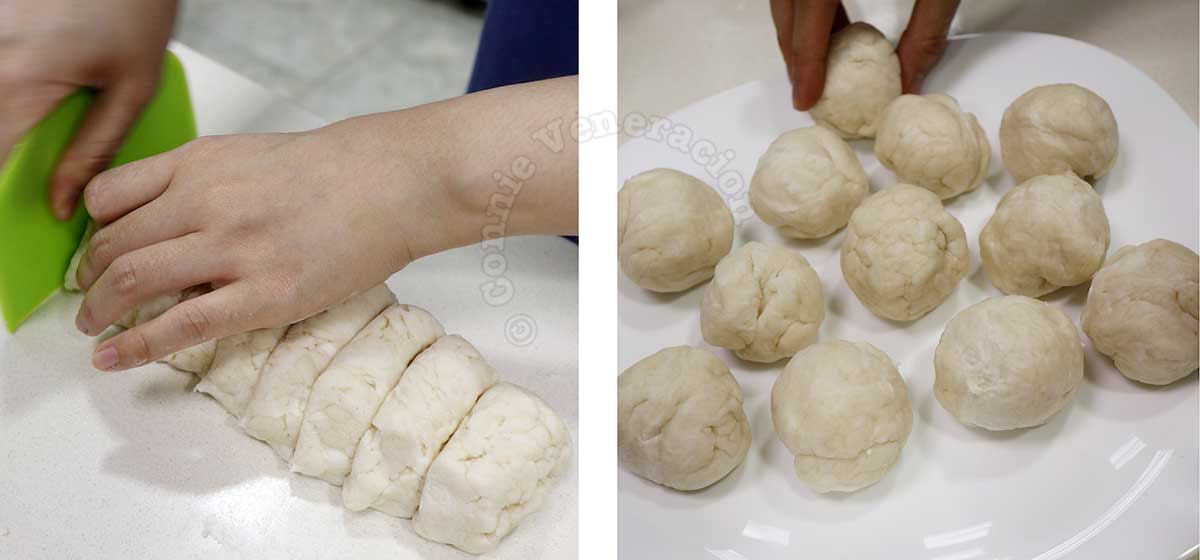
Cut the dough into portions, form into balls and leave to rest in the fridge. Resting allows the dough to relax and the lard to firm up a bit. That’s what makes the dough easy to handle when you start filling it so don’t skip the resting part.
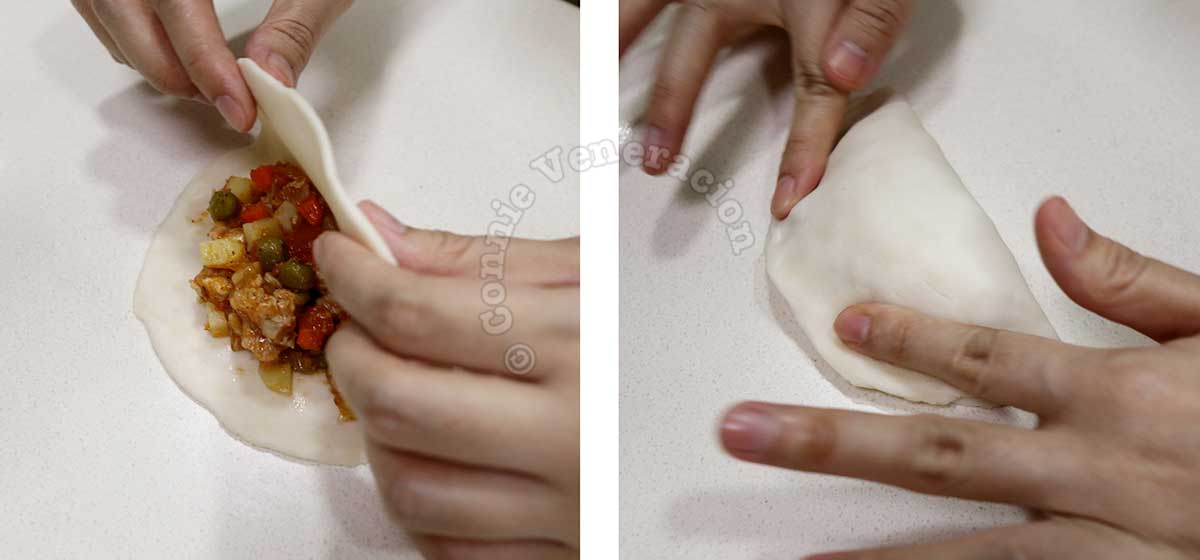
After the dough has rested, the balls are ready to be rolled into discs. The filling is spooned on one side of the disc, the other side is folded over the filling, and the edges are pressed to seal.
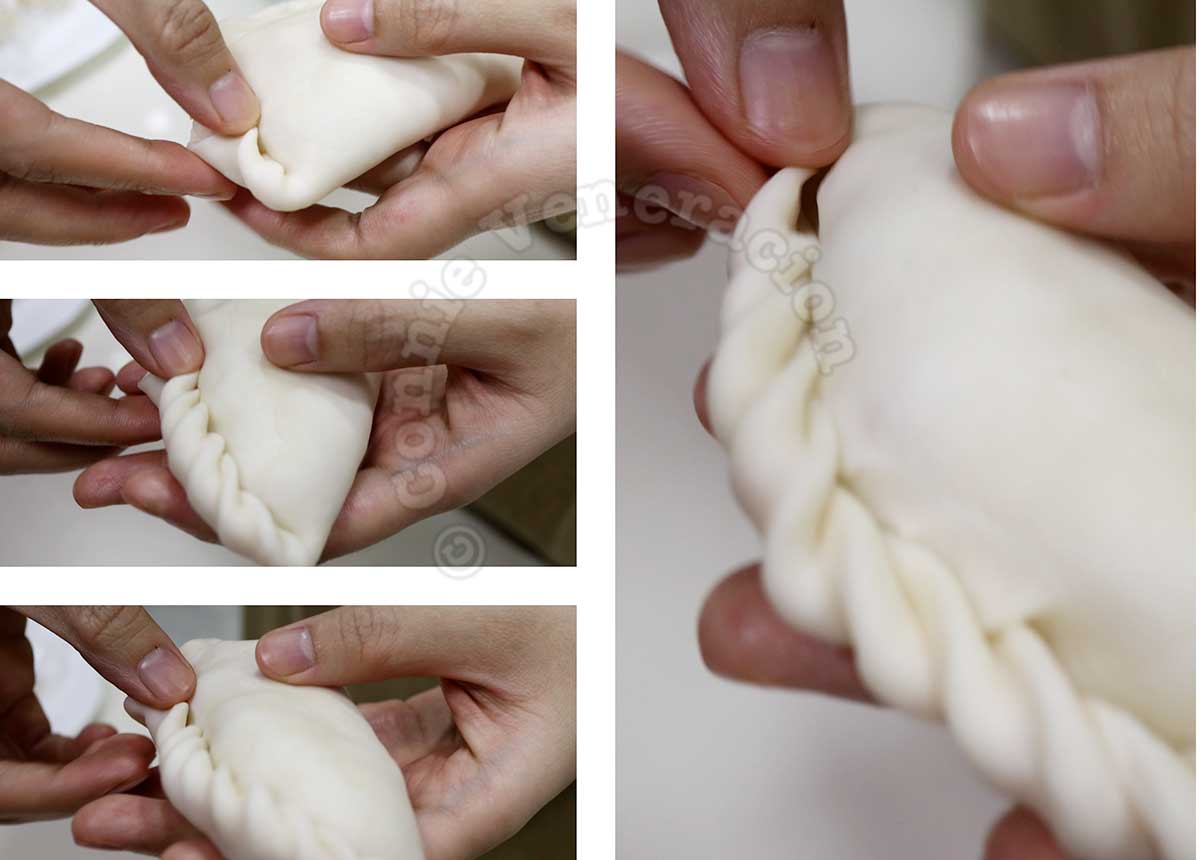
To make sure that the pressed edges of the uncooked empanada will not be forced open by the steam that builds up from inside, the edges are twisted. If you feel that twisting the edges is not easy enough for a newbie, just fold the pressed edges and press with the back of a fork.
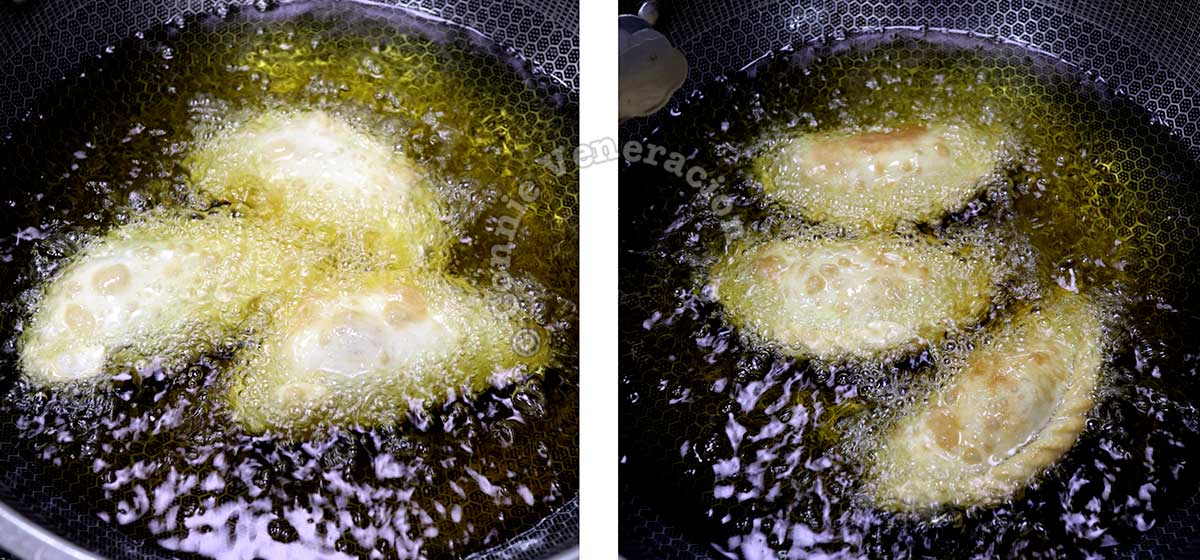
The empanadas go into a pan of hot oil and deep fried until the surface is browned and blistered. It is important to fry in batches so that there is no overcrowding which can make the oil temperature drop. If the oil cools down, the empanadas will soak in the oil longer before they brown. Prolonged frying might split the dough open. It also results in greasy empanadas.
Chicken empanadas
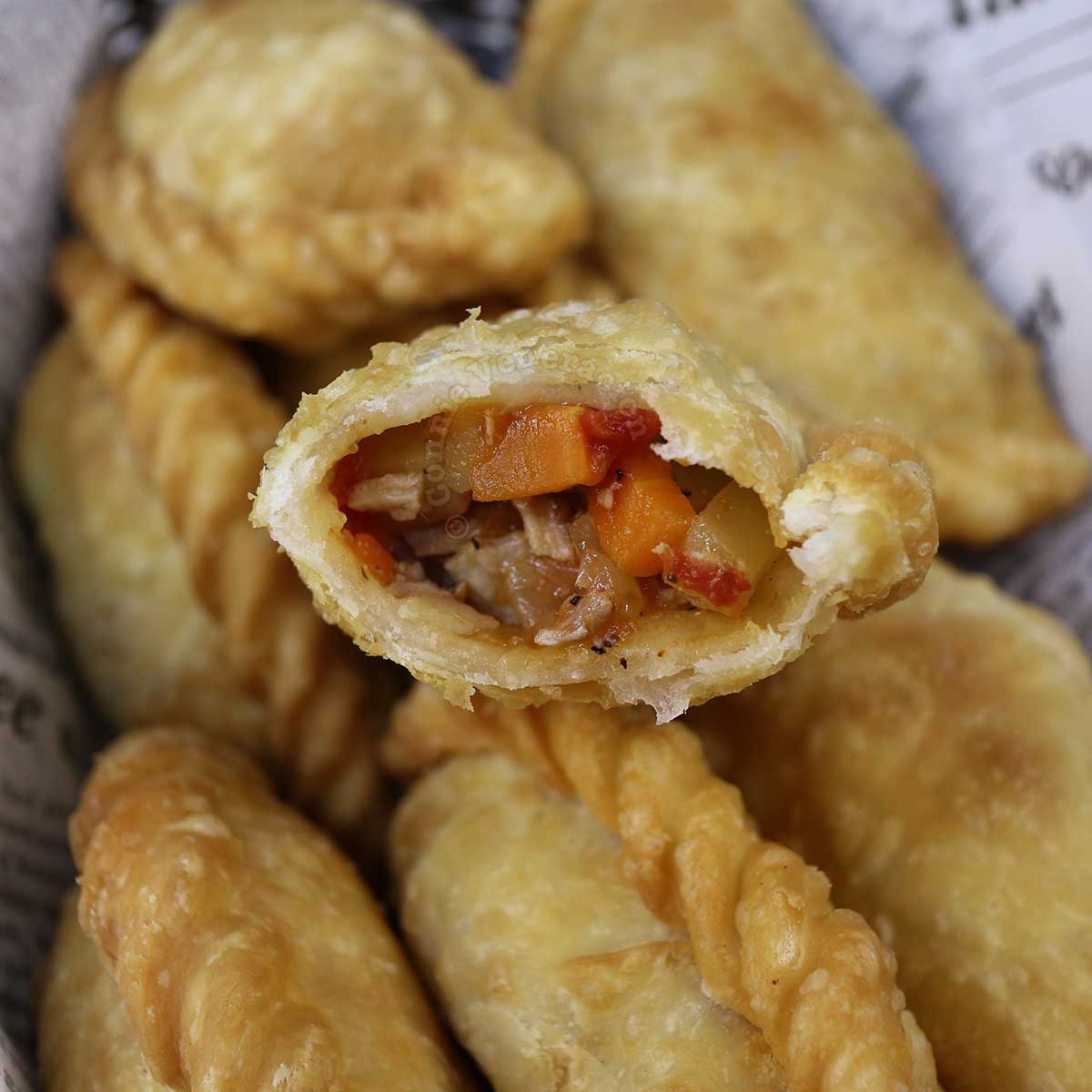
Equipment
- Food processor
Ingredients
Chicken picadillo
- ¼ cup cooking oil
- 150 grams potato peeled and cut into ¼-inch cubes
- 1 medium carrot peeled and cut into ¼-inch cubes
- ½ cup chopped onion
- ¼ teaspoon dried oregano
- 1 teaspoon minced garlic
- salt
- pepper
- 400 grams minced chicken
- 2 tablespoons tomato paste
- ¼ cup sweet peas
Empanada dough
- 3 cups all-purpose flour plus more for your work surface
- ¾ teaspoon rock salt
- ⅓ cup lard
To fry the empanadas
- cooking oil
Instructions
Make the filling
- Heat the oil in a frying pan.
- Spread the potato and carrot cubes in hot oil and cook, stirring occasionally, until browned around the edges.
- Scoop out the potato and carrot cubes and move to a plate lined with paper towels.
- Pour off the oil leaving only a tablespoonful and reheat.
- Saute the onion and oregano with half a teaspoon of salt and a pinch of pepper for a minute.
- Add the garlic and continue sauteeing for another 30 seconds.
- Stir in the minced chicken, sprinkle with a teaspoon of salt and quarter teaspoon of pepper, and cook, stirring often, until the meat is lightly browned.
- Add the tomato paste and cook, stirring, until absorbed by the chicken.
- Add the fried potato and carrot cubes, and sweet peas to the chicken.
- Cook, stirring, for another minute or two.
- Taste and add more salt or pepper, or both, as needed.
Make the empanada dough
- Dump the flour into the food processor.
- Dissolve the salt in ¾ cup of warm water.
- Add the lard to the flour and pulse several times until the flour looks mealy.
- With the motor running on LOW, pour the salty warm water through the funnel slowly.
- Process the dough until all the water has been absorbed.
- Sprinkle a little flour on your work surface, dump in the dough and form into a log (don't worry if the dough doesn't look smooth; it will smoothen after resting).
- Cut the dough into twelve equal portions.
- Roll each portion into a ball.
- Place the balls of dough on a plate, cover with cling film and leave to rest in the fridge for about 30 minutes.
- Take a ball of dough and, with a rolling pin, flatten into a circle about five to six inches in diameter.
- Place two tablespoons of the prepared filling on one side of the flattened dough.
- Lift the empty half of the dough over the filling and press the edges to seal.
- Take the filled dough in your hand. Fold and twist the edges together, little by little, to form a rope-like pattern (note that folding this way is not a must; the important thing is to really seal the filling inside).
- Repeat with the rest of the dough balls and filling.
Fry the chicken empanadas
- Heat enough cooking oil in a frying pan to reach a depth of at least three inches.
- Fry the chicken empanadas in batches (two to four at a time depending on the size of your pan) for four to five minutes or until browned and puffed. Flip them over midway through the frying.
- Scoop out the chicken empanadas and serve while hot.


